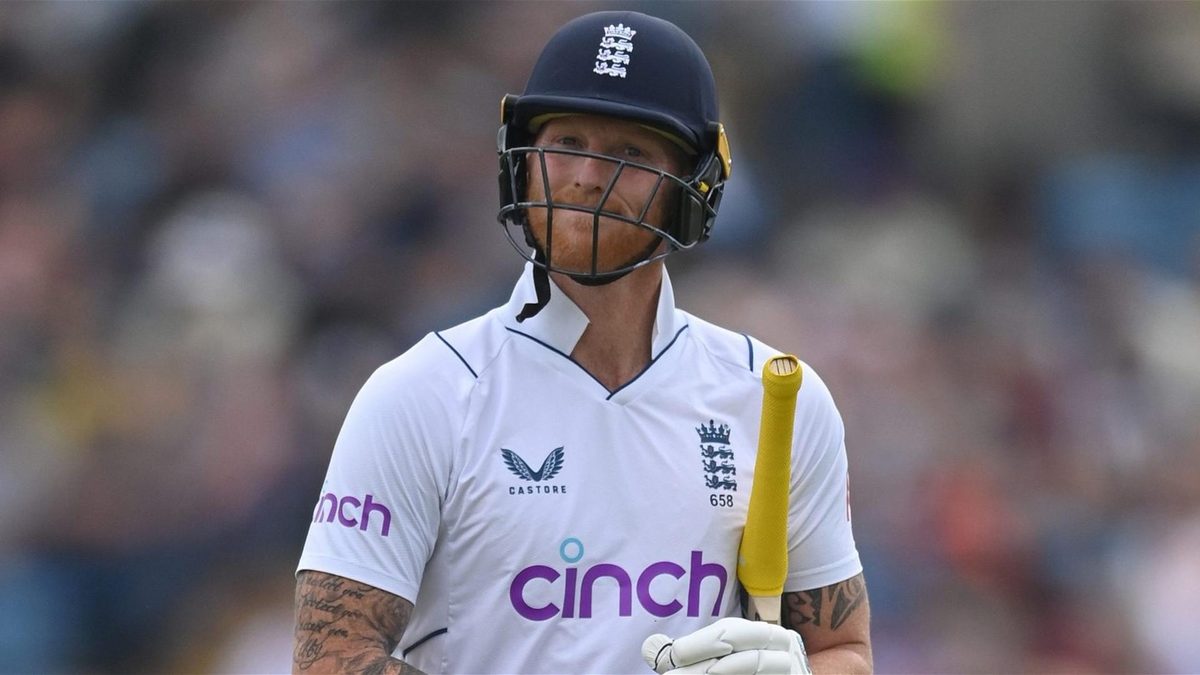
England recovered from an early collapse at Headingley against New Zealand, but the theme of top-order failure should still worry them, writes Ben Gardner.
England are 21-4, Ben Stokes is striding out, and if you find yourself wondering how their new Test captain will approach this situation, you won’t have to wait long to find out. First ball, he steps down and checks Tim Southee for two. Next, he gives himself a sighter. And then it happens. Stokes properly advances this time, unsheathes his driver, and sends Southee into the Howard Stand. He’s here for a good time.
But not, as it turns out, for a long time. Neil Wagner, on for his first bowl of the series, with a point to prove, and the only player New Zealand have to match England’s No.6 for combativeness, sets the field for the bouncer and then twice outfoxes Stokes with length balls. The first beats the outside edge as Stokes saunters and swings, and the second is almost a mirror image, except this time he connects, mis-times and picks out mid-off. Three balls later, England are 55-6. The official England Cricket Twitter account swiftly delete a video of Stokes’ six captioned “We’re in the entertainment business”. The follow-on looms.
Could Stokes have played the situation differently? And will he next time? Up until now, he has batted with extreme aggression throughout the nascent Brendon McCullum era, so that he did again was no surprise. There has been logic behind the slaughter in his three previous innings this series, with England needing to complete their chase at Lord’s before the second new ball arrived, and requiring every extra minute after New Zealand racked up 550 at Trent Bridge. Today, there was another plausible way to approach it: see off the new-ball bowlers, grind down a three-man attack, cash in later.
But that’s not going to be Stokes’ way and there was also a case for a counter-attack. There will always be an argument for trying to hit someone for six, because if you succeed, you’ve hit them for six. Even though England were six down, the momentum had, somewhat, shifted. Jamie Overton came out on debut, rode his luck alongside Jonny Bairstow, and took England past three figures, still six down. The follow-on was avoided. Then everything went crazy, and England ended the day arguably ahead in the game.
England have collapsed before while trying to defend, and they will collapse again while attempting to attack. At least this way the torture is shortened, and the excitement along the way heightened. What is worth more deliberation is why England were 21-4 in the first place, and why they have struggled to lay top-order platforms this series. Stokes has come in with England four wickets down having scored 100 or fewer four out of five times this series. And it’s here, rather than in Stokes swinging from ball one every time, that the real risk/reward equation of the McCullum-Stokes partnership can be found.
In Zak Crawley and Ollie Pope, England have two batters in their top three who are each supremely talented, and who have each shown in bursts that they can be successful in Test cricket. If both nail what are two of the toughest roles in the game, then England will have the core of a side that can carry them forward for years, with a middle-order ideally suited to launching off a top-order platform, and a bowling attack that will only benefit from some rest before padding up.
But Crawley and Pope are each also yet to turn 25 and yet to provide significant evidence they have what it takes to conquer the technical challenge of facing high-class new-ball bowling in testing conditions. Pope’s hundred in the second Test was a thrilling, high-tempo innings, and a reminder of the massive talent he possesses, but it also came on a wicket flat enough to allow Bairstow’s brilliance after tea on the final day. Both of Crawley’s Test hundreds were stroke-filled and sweetly timed, but they also came in drawn games England didn’t get that close to winning. Pope has now batted five times at No.3 in Tests, and passed 20 once. Crawley averages 30.36 in first-class cricket.
The obvious caveat is that Boult’s opening spell was sensational. His delivery to Alex Lees was so good that Lees was already in shock as it bowled him, and the balls to Crawley and Pope, both of which ducked in to seek out the stumps, weren’t far behind. But Test cricket has lots of very good new-ball bowlers right now. The next three Test teams England will face could field a combined pace attack of Jasprit Bumrah, Kagiso Rabada, and Shaheen Shah Afridi. Pope and Crawley might crack it. But asking them to work out how to deal with the challenge posed by opening bowlers of that calibre on the job is a gamble. Its success or failure will go a long way to determining whether England become a team that can compete consistently in all conditions, or simply one that thrills and spills in equal measure.
Bairstow and Stokes will continue to play it as they see fit. Root will continue to be one of the best batters on the planet. But if the top order continues to fail, and that trio are constantly asked to perform the extraordinary, they will only be able to take England so far.








